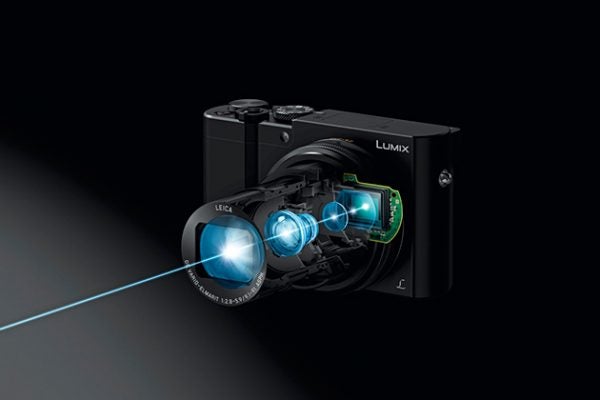With its 1in sensor, the Panasonic Lumix DMC-TZ100 is capable of matching full-frame – with limitations
Following Andy Westlake’s test of the Panasonic Lumix DMC-TZ100 (AP 7 May), in which he suggested that it is the ‘best pocket travel camera money can buy right now,’ I invested in one. This camera uses a 1in sensor with an active area of13.2×8.8mm, giving a crop factor of 2.7 with respect to 35mm ‘full frame.’
This sensor is large enough to qualify the camera for some quite serious photographic work. Ultimately, image quality depends on the number of photons that are captured in an image. As sensor technology generally performs at about the same level within any given generation of devices, the amount of light that can be captured for a given shutter speed depends on two factors: the angle of view of the lens and the area of its aperture or entrance pupil.
Neither of these figures is commonly quoted, and instead we have become used to 35mm full-frame ‘equivalents’. Thus, we can say that the TZ100’s 9.1-91mm lens is ‘equivalent’ to a ‘25-250mm’ lens on 35mm full frame (simply multiply the actual focal length by the ‘crop factor’). In terms of the amount of light gathered, we can do the same by multiplying the f-number by the crop factor to get the 35mm ‘equivalent’, yielding f/7.5-16.
While these figures might not immediately look impressive, both lie within a normal range for a photographer. Many full-frame photographers use f/8 by choice, since it provides a useful compromise between depth of field and image sharpness. At this point it is worth considering that when it comes to viewing an image at a given size, both depth of field and diffraction blur are determined by the aperture diameter and angle of view.
A match for full frame?
So, the TZ100 can replicate the results of a full-frame camera over at least part of its range of operation. At wideangle, it can produce comparable results to a full-frame camera operating at an aperture of f/8 or smaller, and at its telephoto end at f/16 or smaller. The 1in sensor is the smallest sensor for which this is possible with practicable optics, and therefore the TZ100 is the most compact long-zoom camera capable of matching full-frame results – but with limitations.
First, as soon as the full-frame lens is opened above f/8 (or f/16 at the long end), it is producing photographs that the TZ100 cannot match. Second, the TZ100 has a lowest ISO sensitivity of 125. Given that ISO determines image brightness at some given exposure (a combination of shutter speed, f-number and scene luminance), it is not susceptible to the ‘equivalence’ above. So, at an ISO of 125, the TZ100 is only collecting the same amount of light as would a full-frame camera operating at ISO 900. Therefore, if you set a full-frame camera at ISO 800 or below it will produce image quality that the TZ100 cannot match. Even so, in many cases the TZ100 will produce comparable results, with the great advantage that it fits in a pocket.
Bob Newman is currently Professor of Computer Science at the University of Wolverhampton. He has been working with the design and development of high-technology equipment for 35 years and two of his products have won innovation awards. Bob is also a camera nut and a keen amateur photographer.





